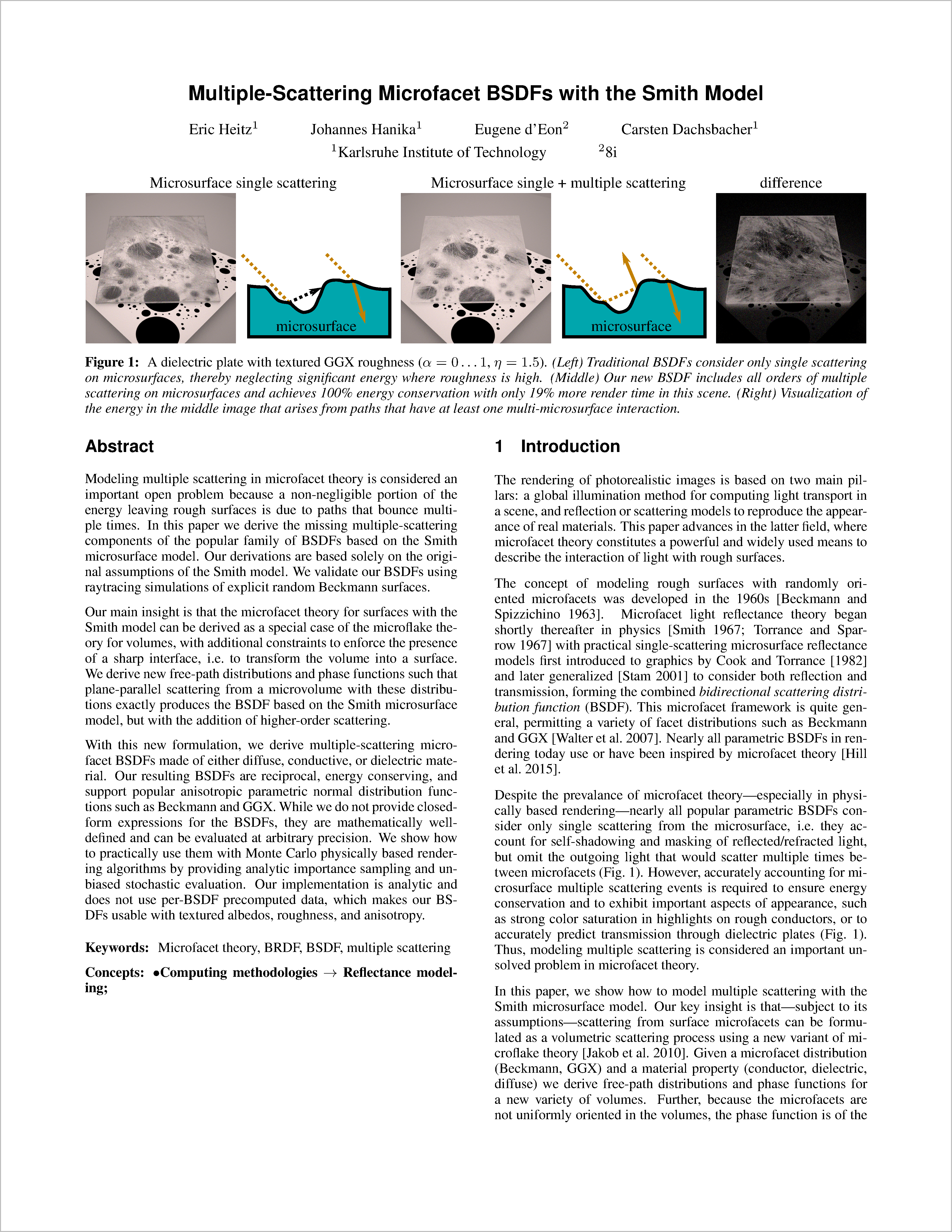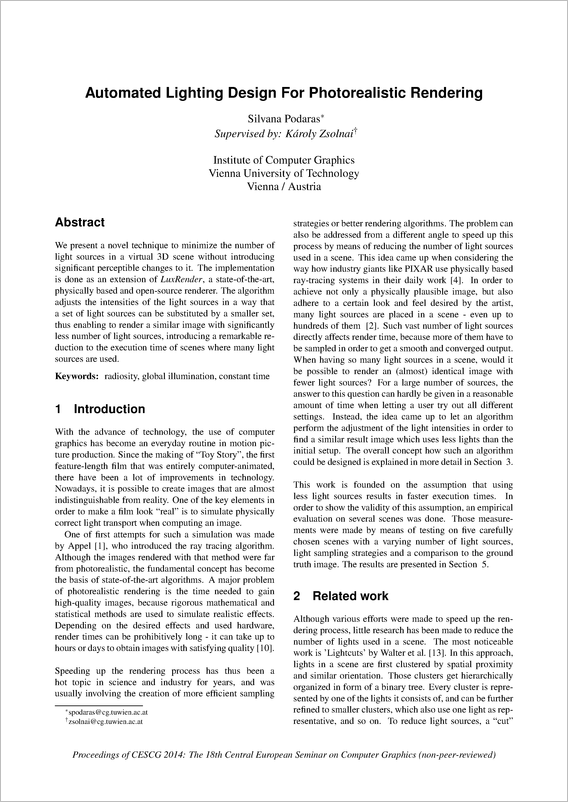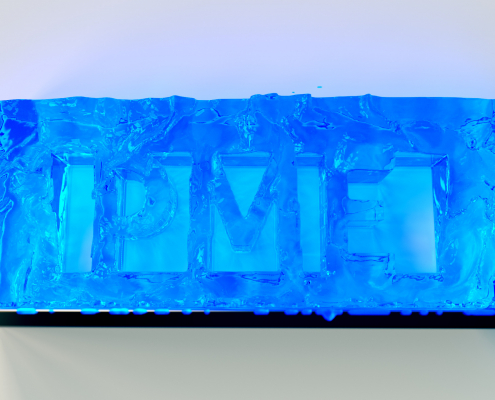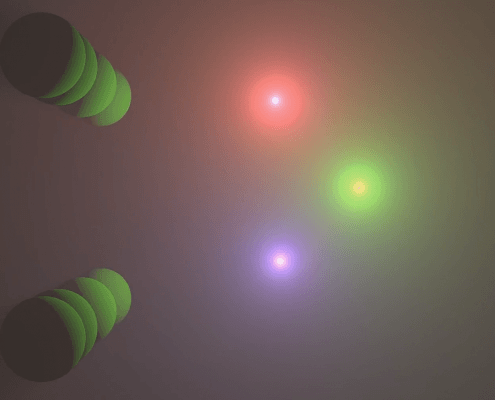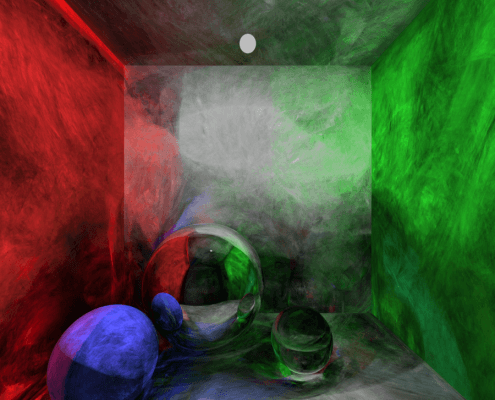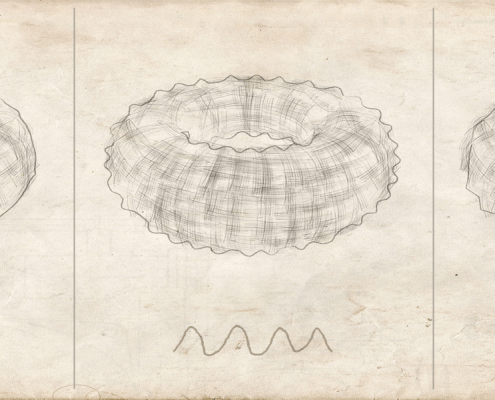Multiple-Scattering Microfacet BSDFs with the Smith Model
Eric Heitz and his colleagues published one hell of a paper on rendering microfacet materials. It has lots of beautifully written mathematics, and is really well illustrated, evaluated, and the full source code is also published. Now it comes with a narrated supplementary video. The paper is available here (or click the image below), check it out!
Status: accepted to ACM SIGGRAPH 2016
(please note that I am in the acknowledgements section and was not a co-author of the paper, I just helped with the video. Happy to have been a very small part of this!)


